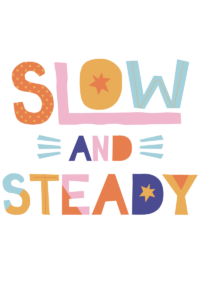It’s the end of the school year. Summer is around the corner. It’s the time of year teachers will get to feel like humans again. We get to unwind, reboot, and even go to the bathroom when we feel like it. Summertime mode is a complete 180-degree from school time mode. Why is that?
Stress
High stakes job demands, limited resources, professional autonomy, negative school climate, feeling their opinions don’t matter, and heightened attention to student test scores contribute to this stress.
I haven’t heard many teachers state, “I don’t have a heavy workload. My district supports me by …”
More than 90% of educators believe the workload in their schools is unmanageable. Their workload can include a substantial volume of planning, grading, administrative duties, and non-teaching tasks.
In the past, I have asked teachers to write down everything on their plate…on a plate. (See what I did there?)

It is apparent that teacher workloads are contributing to high levels of stress in schools. Is our education system exploring ways to support teachers and staff with these high demands? According to Resourceed.prometheanworld.com, under 20% of schools are actively addressing the problem.
Self Care
It’s the new and trendy buzz word being thrown around in education.
Simple suggestions to reduce stress tend to focus on the teachers’ responsibility for self-care (meditation, exercise, take a bath).
These alleviate stress but don’t get to the root. They divert attention away from the systemic stressors that exist in the schools today.
As teachers, we already have to balance work, family, health, friends, and colleagues. Real life being what it is, it’s hard to keep all these balls in the air.
Self-care is not a “nice to have” goal for when you have time to pursue it. Remember Maslow and his hierarchy of needs? He had a good thing going here.

Research shows that failing to address the mental health needs of teachers may affect their ability to address the critical needs of students. Our emotions and stress levels have been found to influence those of students and other teachers. We affect these kids each and every day. Let’s put on the oxygen masks first before putting it on others. Let’s invest in our well-being. Self-care is the foundation that allows a teacher to give their students the focus and energy they deserve.

Self-Care and Our Current Educational System
So how does self-care work with our current educational system? No, it’s not just a yoga class.
We have to start addressing quality over quantity and which one is our goal in education.
Should we spend 2 hours writing extensive lesson plans that will be filed away somewhere or can we use that time to find and set up creative lessons that will engage the students?

What Can We Do?
Question directives, policies, and the reasoning and research behind these systemic decisions. I’m not advocating to rebel against mandates but instead, put in the time to question them. When new initiatives roll in ask which old, unproductive initiatives can roll out. Demand support.
For more info, check out:
- Warning Signs Of Teacher Burnout
- Burnout And Self Care
- The Balanced Teacher
- Self Care Habits
- Self Care Plan
- 5 Days Of Teacher Self Care
- Recharging Our Professional Batteries
Want to check out more?
MEMBERSHIP SITE:
https://zennedmath.com/online-courses/
FACEBOOK GROUP: Zenned Math Teachers
https://www.facebook.com/groups/zennedmathteachers/
YOUTUBE CHANNEL: Zenned Math
https://www.youtube.com/channel/UC5njH_5LoK6G67BvZecGfnw?
WANT ME IN YOUR INBOX? Sign up for my newsletter
https://view.flodesk.com/pages/5efc876dcaabca0028b95eb5
DISCLAIMER: Some links included in this blog might be affiliate links. If you purchase a product or service with the links that I provide, I may receive a small commission. There is no additional charge to you!

